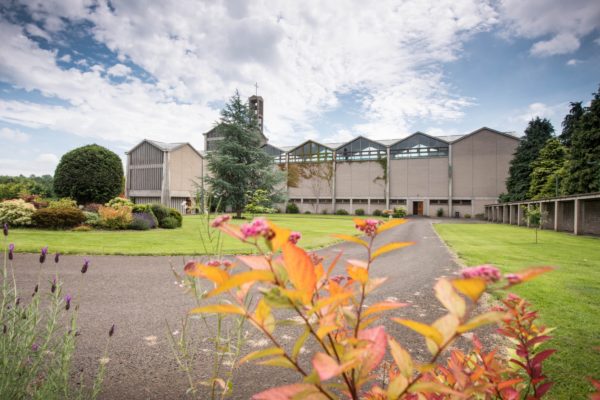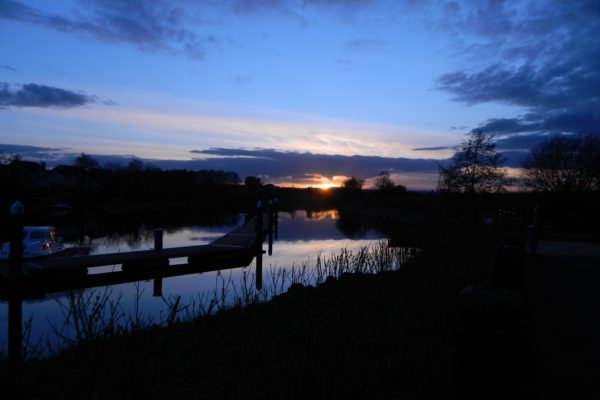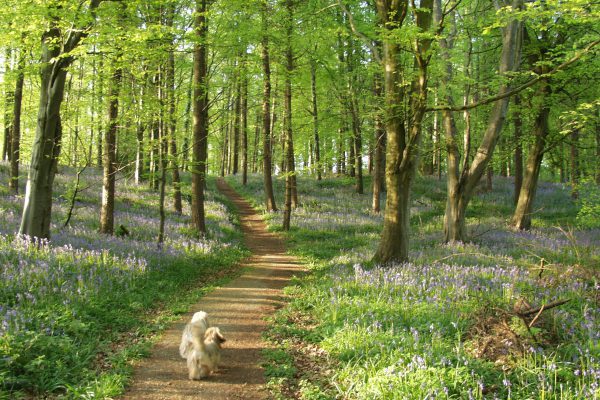Bann Bridge
- Main Street Portglenone
- 1314123423454
- www.bannbridge.com
As far as is known the original crossing point of the river was a ford. This was succeeded by a ferry device.
In Richard Dobbs history of Co Antrim in 1683 he describes a wooden bridge which had been constructed that even had seats on it for travellers to enjoy the river. It was described as one of the best timber bridges in Ireland and had a drawbridge that was taken up by 4 – 6 men every night because of fears that highwaymen and robbers from County Derry known as Tories would use the bridge at night to get into Portglenone! A seven-arch basalt bridge was constructed in 1824. This bridge was 246 feet long and 22 feet breadth within the parapets. It was described in the 1831 Ordnance Survey Memoirs as a "plain structure and in tolerable repair”.
In 1853 the existing bridge was built. It was designed by Charles Lanyon, who designed Queens University; the stones came from Esler’s Quarry in the Largy. The bridge was constructed upside down on site, to make sure it was correct, before it was transported to the village. Each stone was numbered to make sure it was placed correctly. At the river the shell of the pillars were constructed and the hollow inside filled with Bann Brick. There was no mortar used, just sand, lime, soda and animals blood.
When a survey was carried out in recent years it was found that the bridge had not even moved one half inch in 150 years.
There was a swing bridge at the Portglenone side which was removed in the 1970’s. Photographs on this display show the swing bridge opened.
The old shirt factory, now the Wild Duck’s Riverside Suite, was originally owned by a firm called Cullen and Allen who transported goods via Lough Neagh and the Lagan Canal to and from Belfast. Coal, fertiliser, building materials and seeds were brought in and potatoes, grass seed and diatomite were exported.
Diatomite is white clay found on the banks of the river which was used for making cosmetics, explosives and medicines.
Bann brick which was made on the banks of the river near Newferry was also sent away by river.
RIVER BANN DRAINAGE
The Bann system has sole discharge of the longest flow of river water in Ulster, with a catchment area of 2216 square miles and the input of the rivers Maine, Upper Bann, Blackwater, Ballinderry and Moyola. A series of reports between 1814 and 1928 identified the rock barrier at Portna, The Cutts (Salmon Leap) as well as the fords at Portglenone as the main obstacles.
Drainage work on the River Bann had been carried out at the Salmon Leap as far back as 1620 but it was 1860 before the river became navigable to the full extent of the non-tidal 32 miles from The Cutts. Dr Hutchinson of Portglenone House produced a pamphlet in 1738 on the problem of flooding along the Bann but unfortunately his plea fell on deaf ears in parliament. The Townsend Report in 1814 identified a rocky ford, thought to be Molloy’s Ford, opposite the Alexander Demesne. It was also scathing about the inadequate flow capacity, bad construction and poor condition of the Portglenone Bridge at that time.
The McMahon scheme of 1846 to 1859 was a vast work, finally unsuccessful and cost 40% over budget. This scheme however had a considerable archaeological yield right along the River Bann. During the work, many Neolithic (2500 – 2000 BC) and Bronze Age (2000 - 300 BC) weapons and artefacts were found.
The 1926 Shepherd Report led to the comprehensive scheme of the 1930s. The James Dredging Company of Southampton working day and night with two dredgers and blower pairs, removed five million cubic yards of material. Spoil from the river bed went into the now well known "Bann Dumps”. The land for these was purchased from farmers and later handed over to the Forest Service who planted in 1938 and these trees have been harvested in recent years. There were separate rock piles for the intended purpose of sale for road stone but most of these still remain along the banks. Good examples of these rock piles can be seen along the "fisherman’s walk”. Further works took place in 1947 to make 15 ft depth under the Derry side of the bridge as the main navigation channel flows were too strong. This work included a large coffer dam and the photograph on this display (taken by Tommy Clarke of Glenone) gives a fantastic insight into how this work was carried out.
Acknowledgement: The information above is mainly taken from a report published in the Ballymena Times on 13 April 1994 on a talk given by Thomas McErlean, Clady to Portglenone Historical Group.


